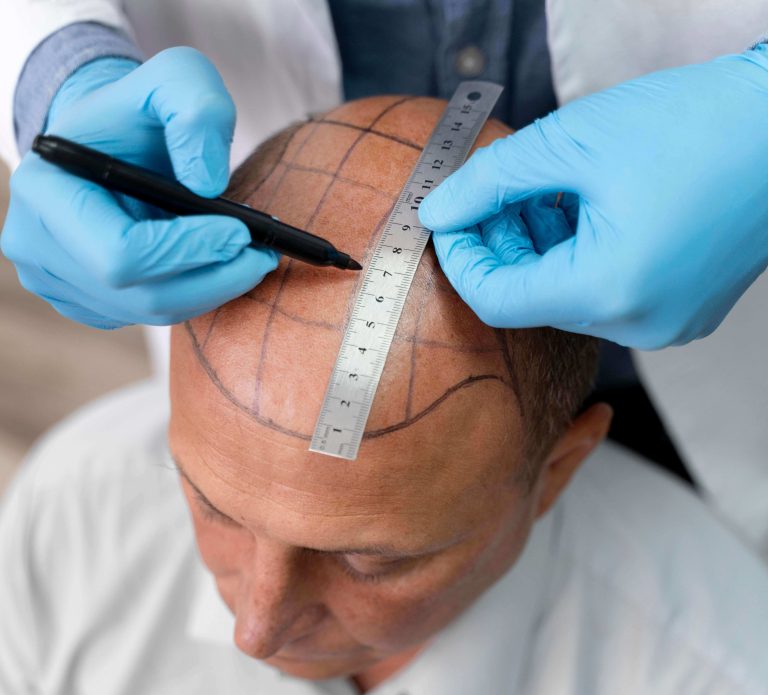Hair Transplant

Hair transplant and everything you need to know about it
What did “Google doctor” tell you before you find yourself here? Before doing hair transplant are you sure it is the right option for you ? Does that mean, there are alternatives; a wig maybe or even something else. Some patients might need a PRP treatment instead of an hair transplant. Which one are you ? Get a free consultation to know the right choice for you. But if you indeed need an air transplant, you need to know the methods used.
Technique used for hair transplant
FUE Hair Transplant

How is FUE Hair Transplantation done?
Follicular Unit Extraction (FUE) is a hair transplantation technique where individual hair follicles are extracted from the donor area and implanted into the recipient area. This is typically done using a specialized instrument that punches tiny holes around the follicular units, and then the extracted follicles are carefully transplanted into the balding or thinning areas. It’s a minimally invasive procedure that can provide natural-looking results.
Who can have the hair transplant?
FUE hair transplant is generally suitable for individuals with mild to moderate hair loss who have sufficient donor hair in the back or sides of their scalp. However, the eligibility for FUE can vary based on factors such as the extent of hair loss, the quality of the donor hair, overall health, and expectations. It’s important to consult with a qualified medical professional or a hair transplant specialist to determine if FUE is a suitable option for your specific case.
Cautions!
Certainly, there are several cautions to consider before undergoing an FUE hair transplant:
Realistic Expectations:** Understand that while FUE can provide significant improvement, it might not result in a full head of hair. Set realistic expectations with your doctor.
Donor Hair:** Ensure you have enough healthy donor hair for transplantation. Over-harvesting donor areas could lead to a patchy appearance.
Medical Evaluation:** Consult with a qualified doctor to ensure you’re a suitable candidate for the procedure. They’ll assess your overall health and potential risks.
Procedure Length:** FUE can be time-consuming, especially for large areas. Be prepared for multiple sessions if needed.
Healing Period:** You’ll need time to recover after the procedure. Swelling, redness, and scabbing are common during the initial healing phase.
Post-Procedure Care:** Follow your doctor’s instructions carefully for aftercare to promote proper healing and minimize the risk of infection.
Results Timeline:** Hair growth post-transplant takes time. It could take several months before you start noticing significant improvements.
Possible Complications:** Like any surgical procedure, there’s a risk of complications such as infection, scarring, or an unnatural appearance if not done correctly.
